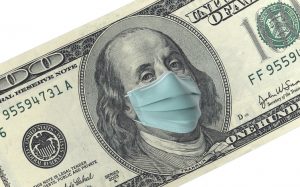Putting 2020’s $10-Trillion-Plus COVID ‘Stimulus’ in Perspective—From Ultra-Deflation to Hyper-Inflation
The comments below are an edited and abridged synopsis of an article by Democracy.info
In response to the Covid-19 lockdown causing the US economy to stop, the US government has put together the biggest stimulus package in US history in order to help corporations and people escape the effects of quarantine.

$340 billion – supplemental spending (hospitals, veterans, public transport, etc.)
$221 billion – variety of tax benefits for businesses
$150 billion – direct aid to states (distributed by population size)
$500 billion – loans/guarantees for businesses, states &municipalities
$349 billion – loans to small business
$301 billion – direct payments to households
$250 billion – unemployment insurance
$32 billion – airlines
The $301 billion for households is just 15% of the entire rescue package. The majority goes to bail out corporations, many of whom have been buying back stock and don’t have the cash needed to weather the financial standstill.
The $500 billion for guarantees for businesses also allows government to take an ownership stake in those businesses.
Up for discussion: 2020’s $10+ trillion Fed stimulus package (what’s going on and what happened); bailout list and timeline; 2020’s $10+ trillion hyperinflation stimulus package—perspective view; the Fed’s printing mechanism; deflation’s role; and the end game.
Future uncertainty will lead to less consumption, creating a deflation spiral. The Fed will pump cash into the system until people start to expect higher prices, pushing them to spend money today instead of tomorrow. Then comes hyperinflation. When central banks need to raise rates to reel in all the printed money, we will be close to a Weimar-style hyperinflation end game.
